West at a Glance - Summer 2018 - Clean Technology
ISSN: 2561-3863
News and Analysis | Success Stories | Upcoming Events
Key Economic Indicators | View the print-friendly version: PDF
News and Analysis

British Columbia
BC Technology Powering Zero-Emissions Vehicles
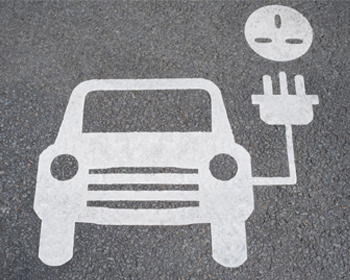
The Government of Canada and the Province of British Columbia have struck an agreement to collaborate on spurring the development and commercialization of new technologies to boost economic growth and reduce greenhouse gas (GHG) emissions. The agreement, which was made under the Pan-Canadian Framework on Clean Growth and Climate Change, included the establishment of a $40 million partnership with Sustainable Development Technology Canada to support the development of clean energy technologies.
As worldwide demand for zero-emissions vehicles increases, BC's clean energy businesses are meeting that need with world-leading technologies. BC boasts a number of companies producing high-power battery systems for use in commercial vehicles. The province also has an impressive history of hydrogen and fuel cell technology commercialization and development. According to the Canadian Hydrogen and Fuel Cell Association's (CHFCA) 2016 Sector Profile, BC is home to the largest cluster of hydrogen and fuel cell companies in Canada, with 31 percent of all facilities. Sixty percent of all Canadian research and development expenditures in hydrogen and fuel cell technologies takes place in BC.
The Metro Vancouver region is home to several zero-emissions vehicle technology leaders. Founded in 1979 and headquartered in Burnaby, BC, Ballard Power Systems develops zero emission fuel cell technologies for ships, transit buses, trains and cars. In 2018, Ballard announced that its fuel cell stack technology, known as the Ballard FCvelocity®-9SSL proton exchange membrane, would be used in 500 fuel cell electric trucks in Shanghai, China. In April 2018, Ballard also announced that it had received a purchase order for 40 fuel cell modules to power Van Hool buses in Germany. This was the largest purchase of fuel cell buses ever made in Europe.
Corvus Energy in Richmond, BC, is a leader in developing lithium-ion battery systems for use in hybrid and fully electric industrial equipment and marine propulsion systems. In May 2018, Corvus was chosen to supply lithium-ion battery systems to power two new all-electric ferries in Norway. Earlier in the year, it was chosen by SEACOR Marine and Kongsberg Maritime to power four hybrid platform supply vessels in the Gulf of Mexico.
Western Economic Diversification Canada's (WD) programs have helped BC become a leader in zero-emissions vehicle technology by supporting the innovation ecosystem and the growth of clean energy companies. Under the Western Diversification Program (WDP), the department has invested in organizations like the CHFCA to help promote BC technologies in global markets and accelerate trade and investment. A WDP investment also enabled the Alacrity Foundation to help clean technology companies assess market opportunities, increase exports and attract investment. Under the Western Innovation (WINN) Initiative, WD has supported firms like LOOP Energy and Corvus Energy who are providing zero-emissions propulsion technology options to truck, bus and marine manufacturers around the globe. WD will continue to support clean technology commercialization and help BC's clean energy sector expand to new heights.
Clean Energy Projects Emerging in BC Communities of All Sizes 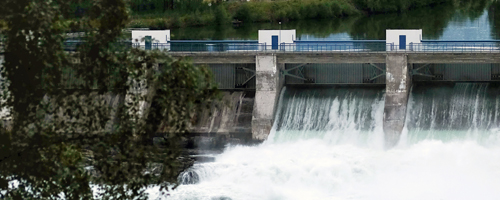
BC is home to an abundance of clean energy resources and has an opportunity to lead the way in developing and adopting renewable energy. BC's clean energy sector is comprised of nearly 150 companies focused on small hydro, wind, solar, bioenergy, tidal and geothermal. To date, it has attracted over $8.6 billion in investment and supported nearly 16,000 direct, full-time person years of construction employment.
Approximately 95 percent of BC's electricity is generated by renewable sources with hydro being the most prevalent, followed by bioenergy. BC has significant biomass capacity in the form of forest biomass and by-products. BC also produces over 16 million tonnes of biowaste annually. Numerous bioenergy projects are emerging in BC communities of varying sizes, helping to reduce their carbon footprints, create employment opportunities and diversify their economies.
In March 2018, the City of Surrey – one of BC's largest municipalities, with a population of over 500,000 – unveiled its $68 million Surrey Biofuel Facility. The facility is a fully integrated, closed-loop organic waste management solution that turns organic waste into a 100-percent-renewable natural gas. The facility can process upwards of 115,000 tonnes of organic waste and reduce local GHG emissions by 50,000 tonnes annually. It has the capacity to fuel Surrey's natural gas-powered waste collection and operations service vehicles, provide heating and cooling for its emerging downtown core, and produce compost. The facility was established through a public-private partnership (P3). The Government of Canada announced a contribution of up to $16.9 million from the P3 Canada Fund in September 2012.
Bioenergy projects are also emerging in BC's smaller communities. In Fort Ware, the Kwadacha Nation (KN), a community of approximately 270 people, recently completed the $4.1 million Kwadacha Biomass project. The facility uses wood chips produced from timber that has been killed by pine beetles to generate electricity. The KN Biomass project has allowed the community to reduce their reliance on propane and diesel fuels and reduce GHG emissions by about 400 tonnes per year. The project's engineering studies were funded through the BC Indigenous Clean Energy Initiative (BCICEI), and capital expenses were funded through a combination of provincial and federal programs.
Sustainable projects like these are key to helping BC communities achieve economic prosperity in a way that is consistent with the federal Innovation and Skills Plan. The plan has set aside more than $2.3 billion to boost Canada's clean technology sector. Initiatives like KN Biomass are also integral to achieving sustainability and advancing the Pan Canadian Framework on Clean Growth and Climate Change.
WD has prioritized cluster growth and inclusiveness, and the department plays an active role in supporting clean growth and promoting equal economic opportunity. Through its convening role and funding programs, WD is supporting BC's emerging clean technology cluster and ensuring that opportunities reach all corners of the province through programs such as the BCICEI. With energy consumption only expected to grow, WD will continue supporting the development and adoption of clean energy throughout the West.
Alberta
Connecting Clean Technology Innovators and Consumers in Alberta
 The environmental challenges in Alberta's oil and gas industry are a major market opportunity for the province's clean technology companies. According to a report by the Alberta Clean Technology Industry Alliance, 68 percent of the province's clean technology businesses target the oil, gas and mining sectors to sell their products and services. The report highlighted that the connections between clean technology providers with consumers, such as the oil and gas industry, needs to be strengthened. Enhanced direct engagement between the supply and demand sides could help to ensure that innovators are addressing the needs of the industry, enabling meaningful progress on environmental problems, and have a solid customer base for their technology.
The environmental challenges in Alberta's oil and gas industry are a major market opportunity for the province's clean technology companies. According to a report by the Alberta Clean Technology Industry Alliance, 68 percent of the province's clean technology businesses target the oil, gas and mining sectors to sell their products and services. The report highlighted that the connections between clean technology providers with consumers, such as the oil and gas industry, needs to be strengthened. Enhanced direct engagement between the supply and demand sides could help to ensure that innovators are addressing the needs of the industry, enabling meaningful progress on environmental problems, and have a solid customer base for their technology.
Such is the thinking behind Canada's Oil Sands Innovation Alliance's (COSIA) Challenges competition, which aims to identify innovation gaps to guide solution providers towards lower carbon emitting innovations. This model is having some success: since 2012, COSIA member companies report reductions to GHG emissions intensity by 9 percent in mining operations, and 11 percent in in-situ, or oil sands drilling, operations. One example of this demand-pull process is the NRG COSIA Carbon XPRIZE challenge. This global competition was launched in 2015 to develop technologies that can make valuable products out of carbon dioxide emissions. Recently, Calgary's own Carbon Upcycling Technologies (CUT) was named as a top 10 finalist in the challenge, alongside companies from across Canada, the US, India, China, and Scotland. CUT's technology uses carbon emissions to create nanoparticles, which can be applied to enhance the performance of materials like concrete, plastics, and batteries. As a finalist, CUT will now need to prove that its innovation can be economically scaled. CUT and four other finalists will test their technologies at a natural gas plant in Alberta, while the others will test their technologies at a coal power plant in Wyoming. The competition will wrap up in 2020 with a winner from each testing site receiving a $7.5 million grand prize.
The new $20 million Alberta Carbon Conversion Technology Centre (ACCTC) in Calgary, the location where the finalists in the competition track will test their technologies, officially opened in May 2018. The Carbon XPRIZE finalists will be the first to use the facility. The ACCTC is owned and operated by InnoTech Alberta, a subsidiary of Alberta Innovates. It is located at the Shepherd Energy Centre, a natural gas-fuelled power plant that is jointly owned by ENMAX Corporation and Capital Power Corporation.
The Clean Resource Innovation Network (CRIN) is another Alberta-based organization working to build the connection between clean technology providers and consumers across Canada. As a network of industry, investors, incubators and accelerators, government, academia, and research institutes, CRIN is working to leverage Canada's strengths and drive collaboration to position the country as a global leader in the production and use of clean hydrocarbon energy.
WD is supportive of industry's efforts to develop and implement clean technology solutions. Since 2014, WD has approved 32 clean technology projects in Alberta. Some recent investments include $600,000 for the Northern Alberta Institute of Technology to design and construct a testing unit to implement water technologies in oil sands, and $400,000 for the University of Calgary to establish the Centre for Smart Emissions Sensing Technologies that will develop technologies to detect and quantify methane emissions in the oil and gas sector.
Saskatchewan
Canada's First Geothermal Power Plant 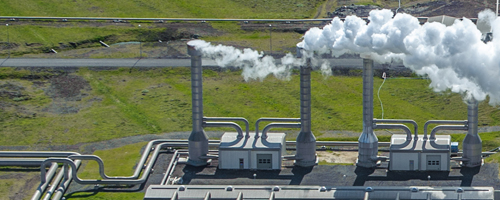
As part of an ongoing move to cleaner energy sources, the Government of Saskatchewan provided $175,000 to DEEP Earth Energy Production Corporation to support the construction of Canada's first demonstration geothermal power plant that is located in southeastern Saskatchewan near the city of Estevan.
SaskPower has committed to increasing renewable energy generation from 25 to 50 percent by 2030. This move will reduce GHG emissions by approximately 40 percent below 2005 levels. According to DEEP's prefeasibility study one megawatts (MW) accounts for approximately 1200 houses. This would equate to removing 5600 tonnes of CO2 from the atmosphere due to carbon based power generation (gas-fired power plants).
The planned demonstration plant will initially be developed for five MW. The company estimates the hot geothermal water may support more than 200 MW of power. DEEP's long-term strategy is to build up to 200 MW of geothermal power facilities.
So how do geothermal power plants work? Power is produced by taking hot water from a reservoir and passing it through a heat exchanger. This water is superheated until it expands into a working fluid that spins a generator to produce power. Following the process, the water is reinjected into the geothermal reservoir, while air coolers cool the working fluid before passing through the heat exchanger again. The electricity produced is integrated into the power grid for customers to use.
In May 2017, SaskPower and DEEP announced they had entered into a power purchase agreement allowing the five MW generated by the pilot plant to be used on the Saskatchewan power grid. Another step in the feasibility process of geothermal power is set to begin in June 2018 when a 3400-metre well will be drilled to gain access to the reservoir in the southeastern part of the province.
This demonstration phase has been a long time in the making with the discovery of the geothermal resource dating back to the 1950's, when the 40,000 square kilometer aquifer was discovered. A prefeasibility study completed in August 2014 outlined the project's viability and noted further economic development opportunities such as for additional revenue from wastewater heat sales. After the plant has utilized the 120 degrees Celsius water the wastewater will still be at 65 degrees and available for further use prior to re-injection to the subsurface. Other countries with geothermal power generation have sold waste heat for several applications including heating greenhouses, utilization in industrial applications and real estate developments.
Manitoba
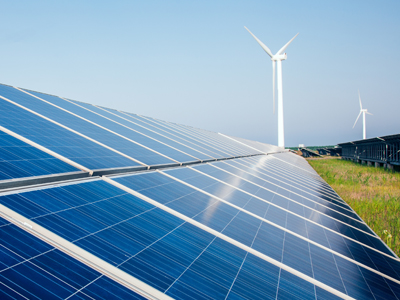
Manitoba's Climate Plan to Build on Existing Strengths
Manitoba has a robust environmental and clean technology sector that employs over 60,000 private and public sector workers in 457 businesses throughout the province; in 2015 the sector generated approximately $2.5 billion in revenues. While Manitoba has signed onto the Pan-Canadian Framework on Clean Growth and Climate Change, the province has its own "Made in Manitoba Climate and Green Plan". Manitoba's plan includes a number of elements for the province's clean technology sector including new funding programs, promoting the sector and, similar to WD, promoting regional cluster growth opportunities to limit transportation of parts and components in the supply chains.
Manitoba has always been a green energy province. The province's hydro grid is powered by 99.7 percent renewable energy, a mix of hydro and wind. Manitoba Hydro is a Crown Corporation and provides energy to almost everyone in the province as well as to homes and businesses beyond the province's borders. Through its subsidiary, Manitoba Hydro International, the corporation provides innovative services and hydroelectric and telecommunications services to over 120 countries around the world.
Aki Energy, one of Manitoba's premier social enterprises works with Manitoba Hydro to help First nations in the province lower their energy bills through renewable energy projects including geothermal and solar energy options. Aki has installed over $3 million in renewable energy technologies in partnership with Manitoba First Nations. Aki provides training for local employment as well as technical expertise, financing and project management to ensure the project creates economic growth for the province's Indigenous peoples right from the start.
Beyond clean energy, Manitoba houses one of the world's leading sustainable development research institutes. The International Institute for Sustainable Development (IISD) in Winnipeg provides leading edge research spanning everything from Canada's water resources to innovative ways of financing new clean technology initiatives. IISD works to discover innovative clean technology options that can be adapted for other countries or regions where there is a need.
Manitoba also has a number of companies that are world leaders when it comes to manufacturing clean technology products. A recent study suggests that the market for electric and hybrid electric buses will be booming by the year 2022. That is good news for Winnipeg-based NFI Group (previously known as New Flyer Industries) – the largest bus and motor coach manufacturer in North America. The NFI Group has been designing and building electric powered buses for decades, and through new technologies developed in recent years it now offers a family of three zero-emissions buses: battery-electric, trolley-electric, and hydrogen fuel cell. All are based on the company's Xcelsior platform, and are powered by electric motors. NFI Group worked collaboratively on this initiative with the Electric Vehicle Technology & Education Centre at Red River College as well as industry partners including Vancouver-based fuel cell provider Ballard.
In January 2018, WD approved five clean technology projects in Manitoba. The Composites Innovation Centre, North Forge Technology Exchange, the Information and Communications Technologies Association, the Bioscience Association and Genome Prairie shared almost $7 million to help develop biomaterials, commercialize clean technology products and processes and find new markets throughout the world for Made in Manitoba solutions.
Success Stories
British Columbia
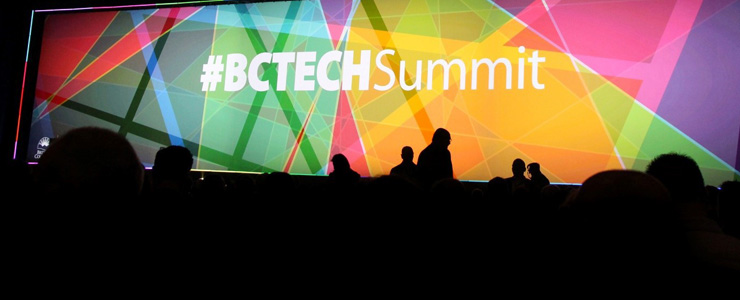
WD Showcases Funding Recipients and their Innovative Work at the 2018 #BCTECH Summit
For the third year in a row, WD supported the #BCTECH Summit and participated as an exhibitor in the #BCTECH Marketplace.
Organized by the BC Innovation Council, the #BCTECH Summit is the largest technology conference in Western Canada. From May 14-16, the Summit brought together over 9,000 participants at the Vancouver Convention Centre to celebrate British Columbia's robust and dynamic tech ecosystem.
As an Innovation Partner for the Summit, WD-BC Region invited a cross section of its clientele to display their innovative ideas at the Summit, from responsibly sourced bioplastics to green house gas (GHG) sensing drones.
Over the three-day summit, 14 exhibitors joined the WD booth to network and explain how funding programs like the Western Innovation (WINN) Initiative and the Western Diversification Program (WDP) have helped them bring their innovative ideas to market.
"WD funding was a great help for us," said Sadaf Sabet, the Product Development Manager of good natured Products, a company that creates consumer products and packaging made from renewable, plant-based materials. "This wouldn't happen without their support!"
In 2017-2018, WD committed over $21 million in funding to innovative projects. This funding supports research and the commercialization of ideas – helping Canadians to create jobs and excel in the digital economy.
Participants at WD's exhibit space included:
Alberta
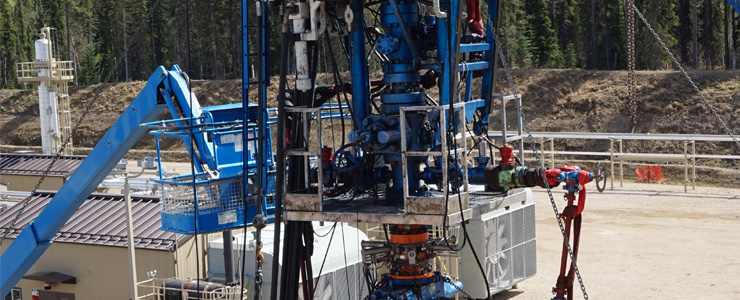
Photo Credit: Intelligent Wellhead Systems
Mitigating Risks through Intelligent Innovation
Aptly named Intelligent Wellhead Systems (IWS) is creating brilliant solutions for the energy sector. Chief Executive Officer Mitch Carlson and Chief Technology Officer Brad Martin spent almost 20 years working in high-pressure snubbing operations where drill pipe, production tubing and specialized down-hole equipment are inserted into gas wells under pressure. Their first-hand knowledge and experience of the stress and dangers in live well intervention inspired them to develop a new tool that would reduce well-control incidents and make operations more efficient.
In 2016, IWS received a repayable contribution of $1.1 million through WD's Western Innovation Initiative to commercialize and scale up the manufacturing of a wellhead component that allows pressure control operators to see inside the blowout preventer stack in real-time. The inVision technology increases efficiencies, reduces the carbon footprint of oil and gas operations, and makes daily tasks substantially safer. IWS has manufactured 10 inVision Systems for three different markets across the globe. Through strategic partnerships with major oil field service companies, IWS is expanding into the Gulf of Mexico, Middle East, South America, and the U.S.
Thanks in part to WD funding and through industry support, IWS expanded the application of its technology to include land and offshore coiled tubing, wireline and plug and perforation fracturing operations.
WD is proud of IWS's efforts to help oil and gas operations prevent a range of potentially life-threatening incidents while reducing GHG emissions through increased operational efficiencies. Now that's intelligent!
Saskatchewan
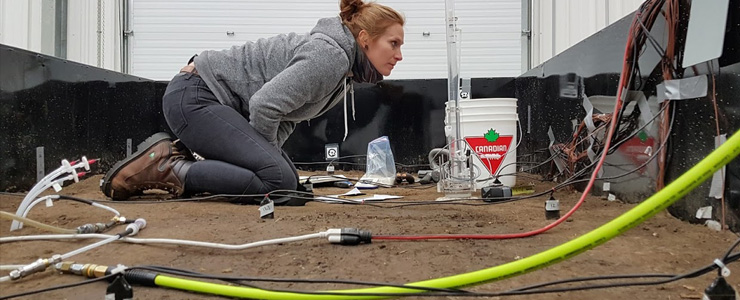
Photo Credit: MOST Facility - Global Institute for Water Security, University of Saskatchewan
Getting the MOST out of Mine Reclamation
Returning a mine site to its original state is far more complex than covering it over and planting trees. The design and materials that go into the cover system must ensure that mine wastes are sealed off from rain and snowmelt that could seep in and carry pollutants into groundwater. Freeze-thaw cycles, plant roots, animal burrows and stability of the covering slope all have to be tested. Regulators also want to know that the cover design will last for years to come.
In 2015, the University of Saskatchewan's Global Institute for Water Security received $1.8 million from WD through the Western Diversification Program to establish the Mine Overlay Site Testing (MOST) facility in Saskatoon.
MOST measures how water moves through a cover design and how those flows change over time. The facility can build scale models of cover designs in modified 4-metre by 2-metre trailers. Sprinklers simulate rainfall and snow melt. Tilting the trailer simulates hill slopes. The contents of the trailers can be repeatedly frozen and thawed, speeding up the passage of the seasons. Instruments throughout the setup trace water flow through the layers of covering materials.
The one-of-a-kind facility makes it possible for researchers working with resource companies to test the designs of the cover systems that go over closed mines. MOST operates in the gap between small-scale lab experiments and complex, large-scale test sites.
According to the Global Institute for Water Security, experiments conducted at MOST more accurately predict how a cover system will work than conventional lab tests, in a fraction of the time and cost of experiments conducted at large outdoor test plots. Client mining companies and engineering firms use the results of the research done by MOST to close and reclaim mines with improved safety for the environment while potentially saving millions of dollars.
Manitoba
Manitoba
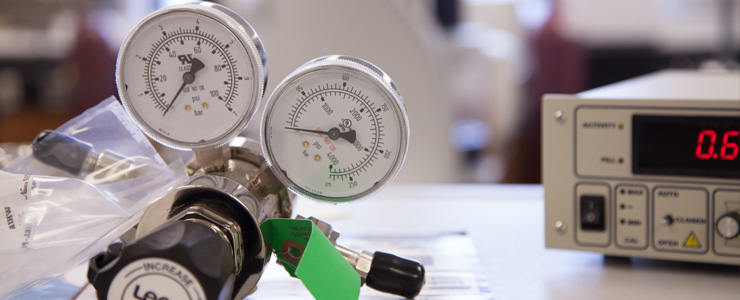
Photo Credit: Kira Koop, University of Manitoba
Pushing Environmental Analytical Research to New Levels
The Centre for Oil and Gas Research and Development (COGRaD) is providing environmental monitoring and remediation solutions for the oil and gas industry. The centre advances the leading research of Dr. Gregg Tomy and Dr. Jörg Stetefeld in the University of Manitoba's chemistry department. With access to specialized equipment not found anywhere else in Canada, Dr. Tomy and Dr. Stetefeld have become recognized experts in monitoring and analyzing environmental contaminants.
In 2014, the University of Manitoba received $2.4 million through the Western Diversification Program to establish COGRaD. This investment enabled the centre to purchase specialized equipment that has supported graduate and undergraduate students as they work in collaboration with private industry. Key activities include research and development, test sampling from the environment, and developing tools and techniques to assist oil and gas companies to meet existing environmental monitoring and remediation challenges. In addition, COGRaD has created 21 highly qualified personnel (HQP) positions which is five times higher than what had been anticipated.
As a result of this research, COGRaD developed four new technologies that are now available to oil and gas companies in Canada. These include new analytical methods and tools to understand remediation of oil in the environment. This technology was transferred to Maxxam Analytics, the largest supplier of laboratory services to Canada's oil and gas industry. COGRaD expects that these technologies will attract significant interest from international laboratories and foreign investment in the centre, generating nearly $1 million in new revenue.
Upcoming Events
International
Farnborough International Airshow: International 1
Farnborough, UK | July 16-22, 2018
One of the world's largest airshows, featuring over 600 exhibitors and 80,000 visitors.
18th International Biotechnology Symposium and Exhibition: International 2
Montreal, QC | August 12-17, 2018
The theme of this year's conference is "Supporting a Healthy World." The symposium will provide a unique, international forum for the exchange of ideas and cross-pollination among peers.
Alberta
Stampede Investment Forum: Alberta 1
Calgary, Alberta | July 8-11, 2018
Hosted by Calgary Economic Development, this event provides an opportunity to gain access and meet industry executives and government officials within Alberta's key industry sectors
TACWEST: Alberta 2
Calgary, Alberta | September 18-20, 2018
Hosted by the Western Canadian Defence Industries Association, this event provides an opportunity to interact with manufacturers and resellers of firearms and equipment, try the products on the range, see demos, and network.
Banff Venture Forum: Alberta 3
Banff, Alberta | September 20-21, 2018
This event provides emerging technology companies with unparalleled visibility and an opportunity to present to leading private equity and venture capital investors from across North America.
2018 Alberta Climate Summit: Alberta 4
Calgary, Alberta | September 26, 2018
Hosted by the Pembina Institute, this event brings together thought leaders from industry, government, environmental NGOs and community stakeholders to learn from success stories, identify opportunities and challenges, and explore solutions related to Alberta's clean energy future.
Manitoba
CanWeld Expo & Conference 2018: Manitoba 3
Winnipeg, MB | September 12-13, 2018
CanWeld will be in Winnipeg for two days of interactive displays, hands-on demonstrations, industry networking and conference sessions.
Introduction to Manitoba Environmental Law: Manitoba 3
Winnipeg, MB | September 19, 2018
Presented by the Manitoba Environmental Industries Association, this course will inform on the purpose of environmental law and Manitoba regulations.
The SAFETYS – Manitoba Safety Awards: Manitoba 3
Winnipeg, MB | September 26, 2018
Presented by the Canadian Manufacturers and Exporters, this evening event celebrates Manitobans making workplaces safe.
Key Economic Indicators
Growth Domestic Product |
BC |
AB |
SK |
MB |
Canada |
Last Update |
|---|---|---|---|---|---|---|
| Real GDPFootnote 1 (2007 $billions, forecast) | $234 | $311 | $61 | $58 | $1,776 | 2018 |
| % ch. from year earlier | 2.6% | 1.9% | 1.3% | 2.1% | 2.1% |
Labour Market |
BC |
AB |
SK |
MB |
Canada |
Last Update |
|---|---|---|---|---|---|---|
| Employment (SA, thousands) | 2,470 | 2,326 | 564 | 646 | 18,596 | May-18 |
| Change from previous month | -12.4 | 2.9 | -2.1 | -1.1 | -7.5 | |
| % ch. from previous month | -0.5% | 0.1% | -0.4% | -0.2% | 0.0% | |
| % ch. from year earlier | 0.1% | 1.6% | -1.0% | 0.5% | 1.3% | |
| Unemployment Rate (SA,%) | 4.8% | 6.2% | 6.8% | 6.5% | 5.8% | May-18 |
| percentage points from previous month | -0.2 | -0.5 | 0.5 | 0.4 | 0 | |
| percentage points from year earlier | -0.8 | -1.6 | 0.4 | 1.2 | -0.7 | |
| Regular EI beneficiaries (SA) | 42,100 | 56,320 | 17,310 | 15,180 | 453,060 | Apr-18 |
| Change from previous month | -1410 | -3,040 | -370 | -240 | -15,940 | |
| % ch. from previous month | -3.2% | -5.1% | -2.1% | -1.6% | -3.4% | |
| % ch. from previous year | -21.9% | -28.7% | -10.0% | -3.0% | -18.1% | |
| Average weekly earnings | $962.44 | $1,148.99 | $1,015.37 | $931.47 | $997.34 | Mar-18 |
| Change from previous year | $27.48 | $29.40 | -$0.54 | $21.87 | $30.05 |
Prices |
BC |
AB |
SK |
MB |
Canada |
Last Update |
|---|---|---|---|---|---|---|
| CPI (y/y) | 2.7% | 2.6% | 3.0% | 2.7% | 2.2% | May-18 |
| CPI (y/y) previous month | 2.7% | 2.3% | 2.5% | 2.9% | 2.2% | Apr-18 |
Consumers and Business |
BC |
AB |
SK |
MB |
Canada |
Last Update |
|---|---|---|---|---|---|---|
| Retail Sales (SA, $millions) | $7,270 | $6,790 | $1,648 | $1,681 | $49,546 | Apr-18 |
| % ch. from previous month | 1.1% | 0.2% | 2.2% | -0.8% | -1.2% | |
| % ch. from previous year | 5.9% | 2.2% | 3.0% | -2.2% | 1.6% | |
| Manufacturing Sales (SA, $millions) | $4,531 | $5,781 | $1,532 | $1,622 | $56,231 | Apr-18 |
| % ch. from previous month | -0.1% | -5.3% | 6.7% | 0.8% | -1.3% | |
| % ch. from previous year | 7.6% | -2.4% | 16.2% | 6.7% | 3.6% | |
| Building Permits (SA, $millions) | $1,240 | $1,205 | $181 | $266 | $7,811 | Apr-18 |
| % ch. from previous month | -22.6% | -4.5% | 15.3% | 10.4% | -4.6% | |
| % ch. from previous year | -1.9% | 15.4% | 2.4% | 16.2% | 6.5% | |
| Housing Starts (SAAR, thousands) | 43 | 36 | 5 | 6 | 196 | May-18 |
| % ch. from previous month | 3.1% | 22.8% | 97.1% | 1.5% | -9.8% | |
| % ch. from previous year | -10.3% | 11.7% | -8.2% | -44.4% | 1.0% |
International Trade |
BC |
AB |
SK |
MB |
Canada |
Last Update |
|---|---|---|---|---|---|---|
| Merchandise Exports ($millions) | $3,658 | $9,018 | $2,693 | $1,276 | $43,370 | Apr-18 |
| % ch. from previous month | -9.4% | -1.4% | -0.4% | -0.4% | -4.8% | |
| % ch. from previous year | -2.5% | 9.4% | 7.7% | 18.0% | 4.1% | |
| Merchandise Imports ($millions) | $4,963 | $2,779 | $1,076 | $1,938 | $50,196 | Apr-18 |
| % ch. from previous month | -2.5% | -4.0% | -4.4% | -10.7% | -4.6% | |
| % ch. from previous year | 18.7% | 18.4% | -4.4% | 6.1% | 7.7% |
Demographics |
BC |
AB |
SK |
MB |
Canada |
Last Update |
|---|---|---|---|---|---|---|
| Population(estimate) | 4,862,610 | 4,334,025 | 1,171,240 | 1,348,809 | 37,067,011 | Q2 2018 |
| % ch. from previous year | 1.4% | 1.4% | 1.0% | 1.3% | 1.4% | |
| Largest Cities (CMAs) | Vancouver (2,463,431) |
Calgary (1,392,609) |
Saskatoon (295,095) |
Winnipeg* (778,489) |
2016 | |
| Victoria* (367,770) |
Edmonton* (1,321,426)) |
Regina* (236,481) |
||||
|
From the 2017 Canadian Clean Technology Industry Report, by Analytica Advisors:
|
||||||
About Western Economic Diversification Canada
Western Economic Diversification Canada (WD) was established to promote the development and diversification of the economy of Western Canada and to advance the interests of the west in national economic policy, program and project development and implementation.
The Department plays a key role as co-investor, convener, and champion for the west, making strategic investments that strengthen the west's traditional economic drivers while accelerating the development of new opportunities.
WD's strategic investments help researchers and businesses move new ideas from the test bench to the market, support skills development and foster business innovation. WD also advocates on behalf of western Canadian industry, working to ensure that businesses are strong, competitive, and poised to take advantage of opportunities in the global marketplace.
- Date modified: